How to get leads from AdWords at a lower cost? You, as a SaaS marketer, may have several answers to this question.
But what if you work in a highly competitive industry?
In such an industry, company specialists can easily spend a lot of time and money trying to get qualified leads from Google AdWords.
There are also spheres where competition and cost-per-click (CPC) bids are especially high.
How Can Kraftblick Help Your Software Company?

- We build marketing strategies from scratch and fix existing ones. More about that here.
- We provide consultations to company owners, directors, heads of marketing and sales, marketers. This is how we do it.
See you soon 🙂
For example, at the time of writing this post, suggested bids for keywords “CRM software” and “time tracking software” were as follows:
 Not cheap, to put it mildly.
Not cheap, to put it mildly.
This article will show how SaaS companies can get qualified leads with Google AdWords at a lower price, using four main strategies.
The first two involve lowering the cost of the keywords themselves.
The other two approaches will lower the cost of leads by ensuring more accurate targeting (which means the conversion rate will be higher).
Approach #1. Keywords = Competitors’ Brand Names
For clarity, let’s take a look at one real-life example.
Let’s enter the word “toggl” in Google. Toggl is a company that offers time-management solutions.
This is the result we see:
 Google shows Toggl’s website after the competing company’s ad.
Google shows Toggl’s website after the competing company’s ad.
With this approach, you can use your competitor’s brand to give your own some cheap advertising.
Here’s how to do it:
1) Make a list of your competitors
You can do this manually. Just use Google to find competitors. Enter the name of your company and the word “competitors.”
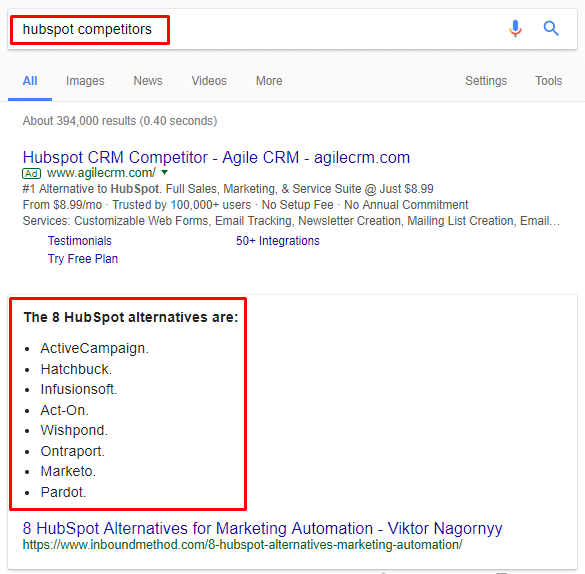 The competitors list will look like this.
The competitors list will look like this.
But we suggest using a more precise technological approach:
- Go to Capterra, an aggregator of various software solutions, and enter your industry in the search line.
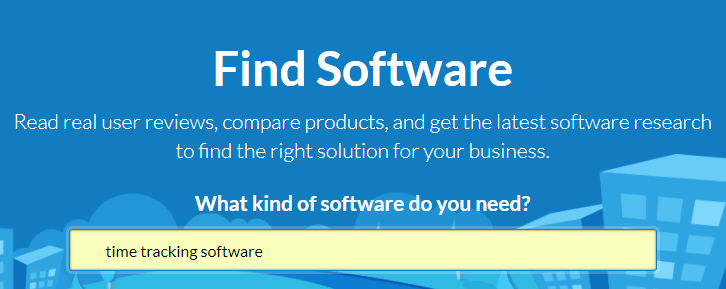 Here and further on, we will use time-tracking software as an example. (Image Source: capterra.com)
Here and further on, we will use time-tracking software as an example. (Image Source: capterra.com)
- Open the list of competitors
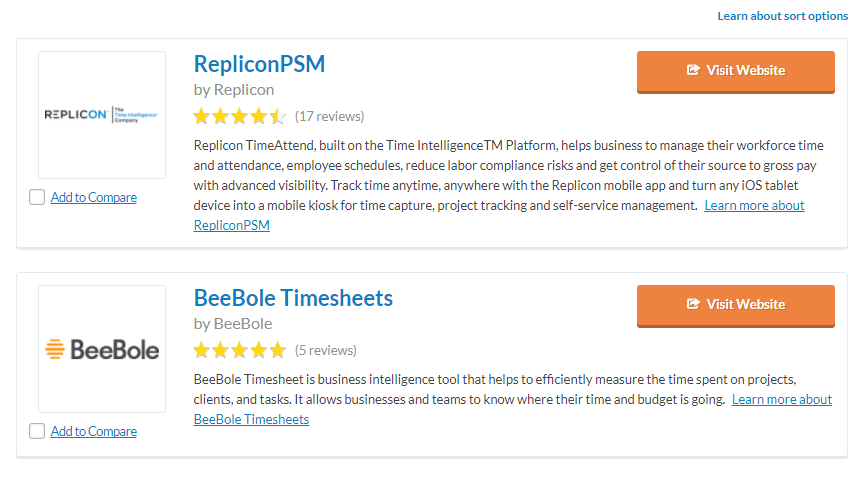 All your “blood enemies” in one place.
All your “blood enemies” in one place.
- Save the list using Data Miner
Data Miner is a plugin that allows you to extract data from web pages and translate it into different formats.
After installing the plugin in your browser, open the Capterra page with a list of competitors. Run the plugin and click the “Public” button:
 Here you’ll see data lists made by users who previously visited this page.
Here you’ll see data lists made by users who previously visited this page.
Open one of these lists, for example “Capterra new”:
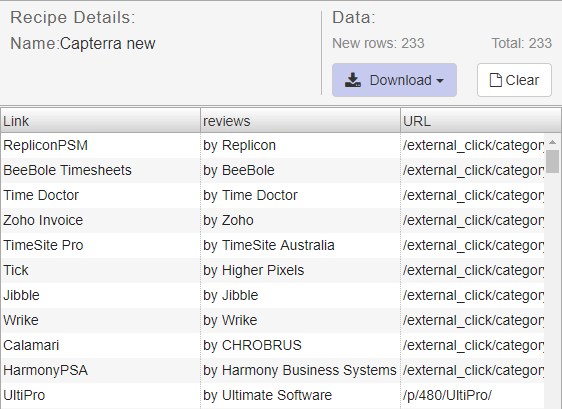 The plugin will provide you with a list of your competitors.
The plugin will provide you with a list of your competitors.
Download this list in the Excel format:
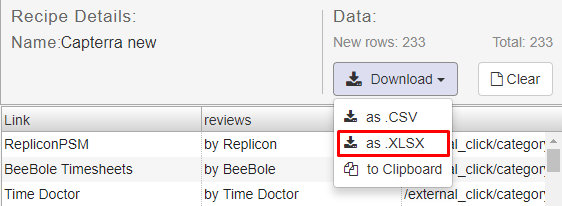
Then open the downloaded file:
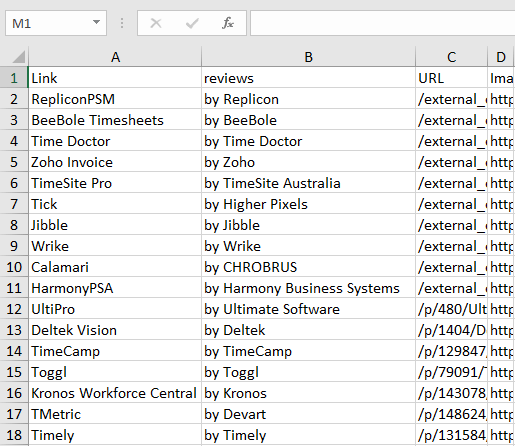 You‘ll see all your competitors in this file.
You‘ll see all your competitors in this file.
Now, you have to work a little with this file.
Names of competing companies may be words that don’t exactly scream ” brand name.”
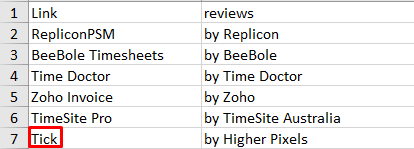 For example, “Tick.”
For example, “Tick.”
A company name like that, alone, won’t be a suitable keyword, because such a query is very broad. People who Google such requests may not be looking for your competitors.
That’s what will happen if you enter the word “tick” in Google:
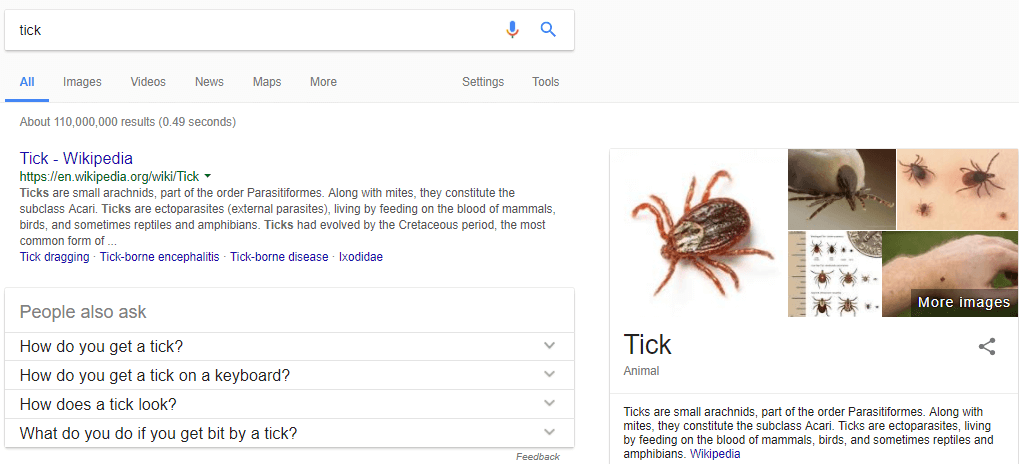 No any connection with time tracking.
No any connection with time tracking.
This keyword needs to be modified.
As an option, we could add a phrase like “time tracking” to the name of a company:
 Now it looks more like a brand search query.
Now it looks more like a brand search query.
Let’s verify this keyword in Google.
As we can see, this query is relevant:
 Tick’s competitors do not slumber.
Tick’s competitors do not slumber.
2) Check the traffic volume of your competitors’ brands using Google Keyword Planner
After we put company names into the Excel file (and added the phrase “time tracking” to those that needed modification), we copied and pasted them into Google Keyword Planner like this:
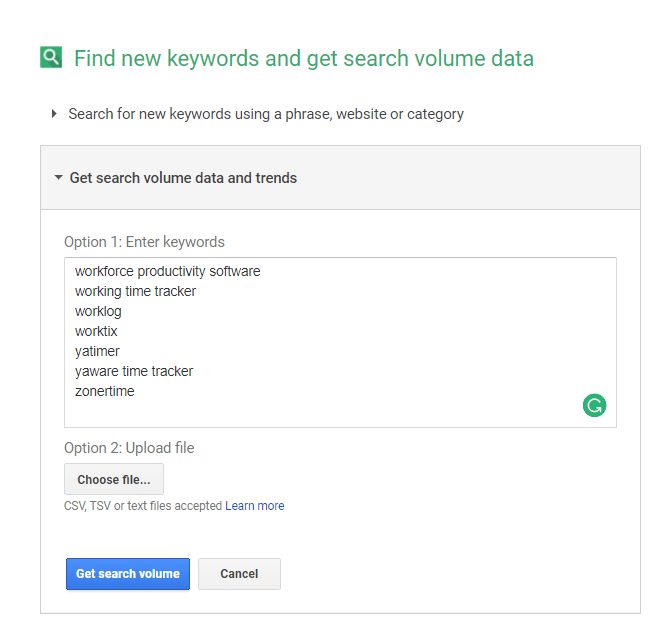 And press “get search volume.”
And press “get search volume.”
Then we got a list of keywords and their volume:
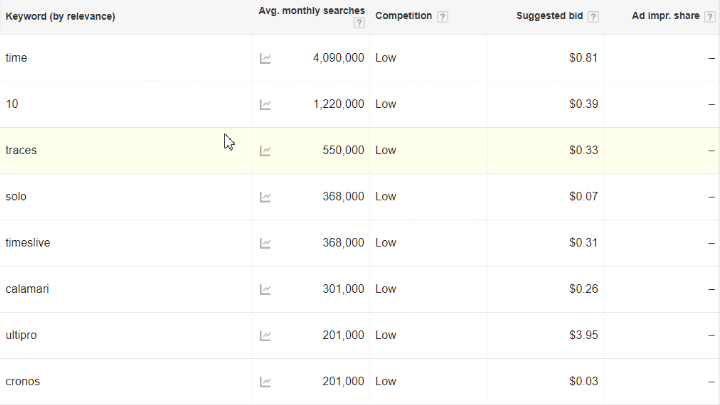 Note that the most popular words on the list are likely to be unsuitable as keywords.
Note that the most popular words on the list are likely to be unsuitable as keywords.
Scroll down, and you will find relevant keywords with low CPCs.
Let’s check a “rescue time” keyword:
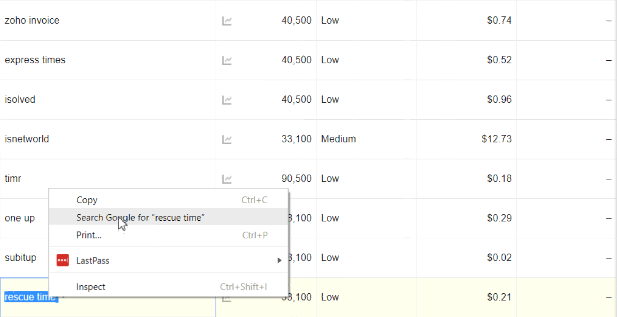 We should search it on Google.
We should search it on Google.
Then we look at the result:
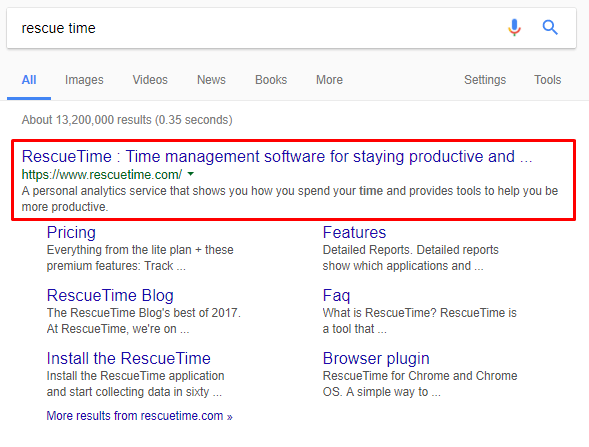 Yes, such a company exists.
Yes, such a company exists.
3) Select keywords with the largest amount of traffic from the list
After you have a list of keywords, review each of them using Google Keyword Planner.
Make sure the keywords that you plan to use get enough traffic.
4) Add keywords related to the competing company in your AdWords campaigns
After you have received a list of popular keywords, include them in your advertising campaign.
Thus, by hitching a ride on a competitor’s brand, you’ll be running ads with low CPCs.
Approach #2: Keywords = Alternatives
This strategy is similar to the previous one, but by employing it, the traffic you get will be better targeted.
In short, we’ll take the name of a competing company and add the word “alternatives” to it.
 Here’s what this keyword might look like.
Here’s what this keyword might look like.
These keywords have lower bids, lower competition, and they bring targeted traffic because people are already looking for an alternative to your competitor..
 The bid is only $1.97. Remember how you would pay $21.56 for the “time tracking software” keyword?
The bid is only $1.97. Remember how you would pay $21.56 for the “time tracking software” keyword?
How to use this approach:
1) Use names of competing companies and add the word “alternatives” to them for getting keywords
Remember our Excel file with competing company names? We’ll need it now.
First, we add one column to the spreadsheet.
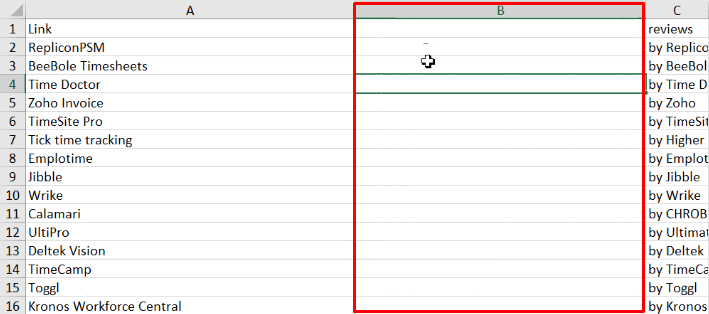
Then enter the formula =A2&“alternatives” in any row of the new column.
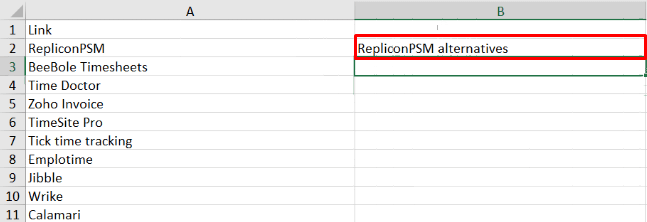 Here’s what happens if you enter this formula to the right of RepliconPSM.
Here’s what happens if you enter this formula to the right of RepliconPSM.
We copy this formula for all companies from our list.
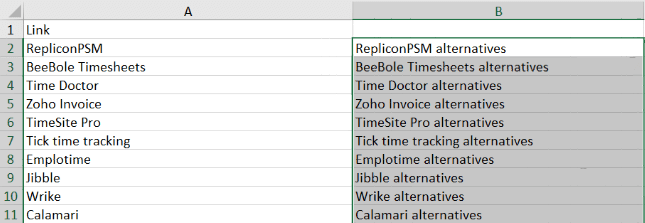 The word “alternatives” will appear next to each company name. These are the potential keywords.
The word “alternatives” will appear next to each company name. These are the potential keywords.
Of course, not all of these keywords will be appropriate. So we need one more step.
2) Check traffic volume and relevance of keywords using Google Keyword Planner
This step will help us determine which keywords we should use.
First, we copy the keywords from the Excel file into Google Keyword Planner.

Then we check the volume of our queries and their bids:
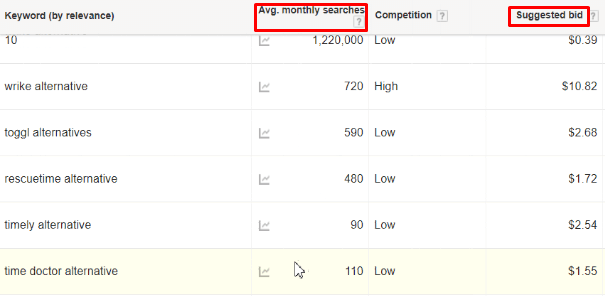
And select the most popular and relevant ones from the list.
Sometimes it is worth trying even non-popular keywords. Experience shows that sometimes they may perform well.
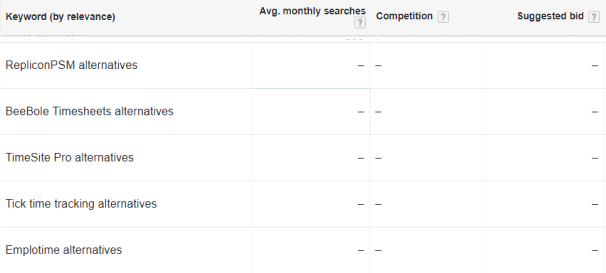 The fact that no one is searching for a particular company doesn’t mean that this company won’t become popular in the future.
The fact that no one is searching for a particular company doesn’t mean that this company won’t become popular in the future.
3) Use the most popular keywords for your ad campaigns
This step is quite simple.
Just include the selected words in your advertising campaigns.
4) Make a separate landing page for every “alternatives” keyword of your ad campaign
Here’s where things get really interesting.
Some companies make separate landing pages specifically for “alternatives” keywords.
 Everhour made a landing page specially for this “toggl alternatives” ad.
Everhour made a landing page specially for this “toggl alternatives” ad.
Such landing pages may convert well, adding an extra boost to your ads’ performance.
 This landing page tells why a consumer should choose Everhour.
This landing page tells why a consumer should choose Everhour.
Approach #3. Keywords = User Segments
Unlike previous strategies, this one is based on keywords that connect well with your target audience.
It helps reduce the net cost of ads, thanks to a higher conversion rate (which may compensate for even a medium or high CPC).
Here are four ways how to get leads at a lower price.
1) Enter a keyword in Ahrefs
To begin with, enter a few words that reflect the specifics of your product and the word “for” in Keywords Explorer.
For example, you can enter something like this:
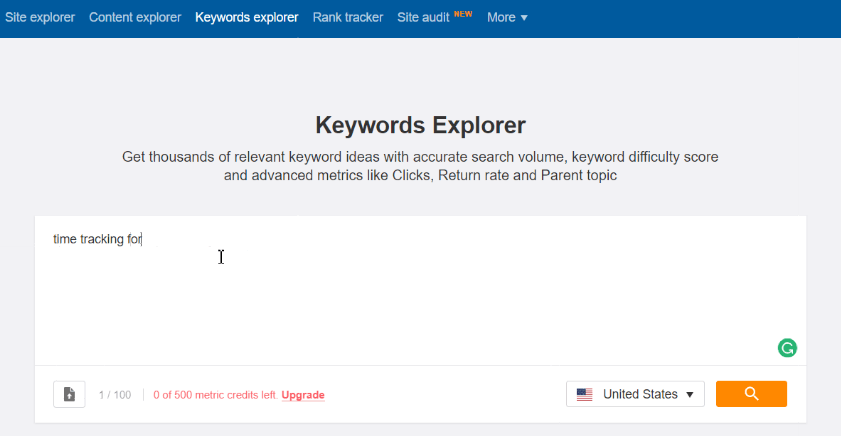 A reminder that, in this article, we’re using time tracking as an example.
A reminder that, in this article, we’re using time tracking as an example.
Then press “view all”:
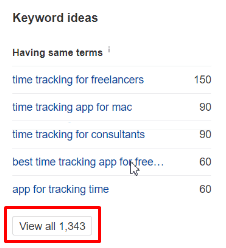
2) Export the list of keywords into an Excel file
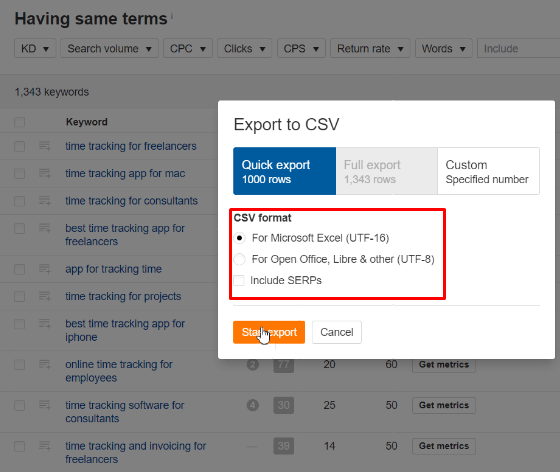 Choose the format and press the orange button.
Choose the format and press the orange button.
Open this Excel file:
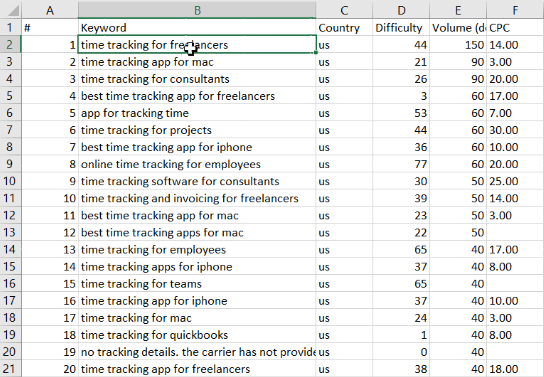 You will get a list of all the keywords.
You will get a list of all the keywords.
Now you need to choose keywords that are both suitable and popular, as well as determine whether they fit your target audience.
For example, if your product is suitable for freelancers, use the ”time tracking for freelancers” keyword.
3) Use appropriate keywords with the most traffic volume
After you select the appropriate keywords, use them in your advertising campaign.
You can also make separate landing pages for each keyword, which will greatly increase the conversion rate.
Approach #4. Keywords = Product Features
The last approach is connected with the features of your product. You will focus on consumers who are interested in certain product features.
Here’s what to do:
1) Open profiles of your competitors on Capterra
Capterra will help you get ideas for keywords.
Go to the category of your product.
For example, if you offer a time tracking tool, go to the time tracking software category.
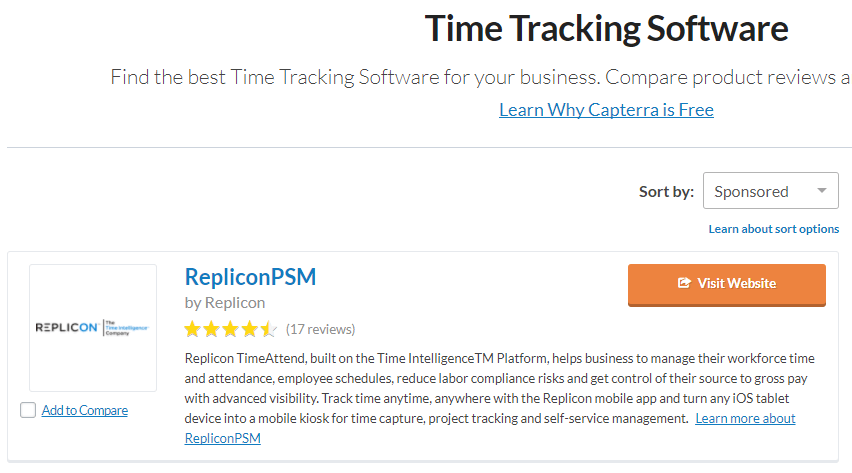 Image Source: capterra.com
Image Source: capterra.com
Then start opening profiles of your competitors.
2) Look at the features of their products
In the competitor’s profile, find the list of features of the product.
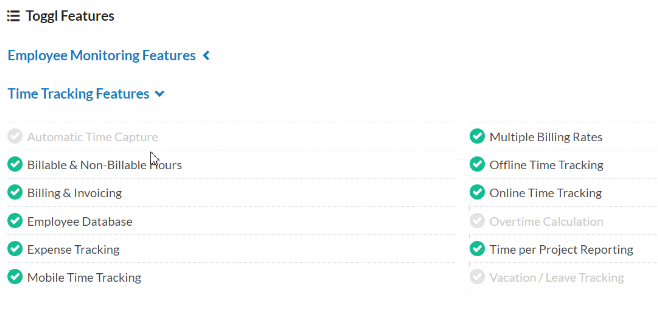 The list of Toggl features.
The list of Toggl features.
Select those features that your tool supports and copy them into any text document.
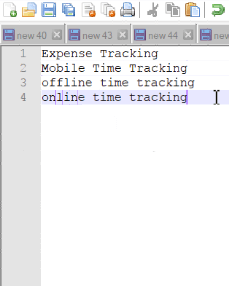 Make a simple list.
Make a simple list.
3) Check these keywords with Google Keyword Planner
Just copy the keywords you selected into Google Keyword Planner:
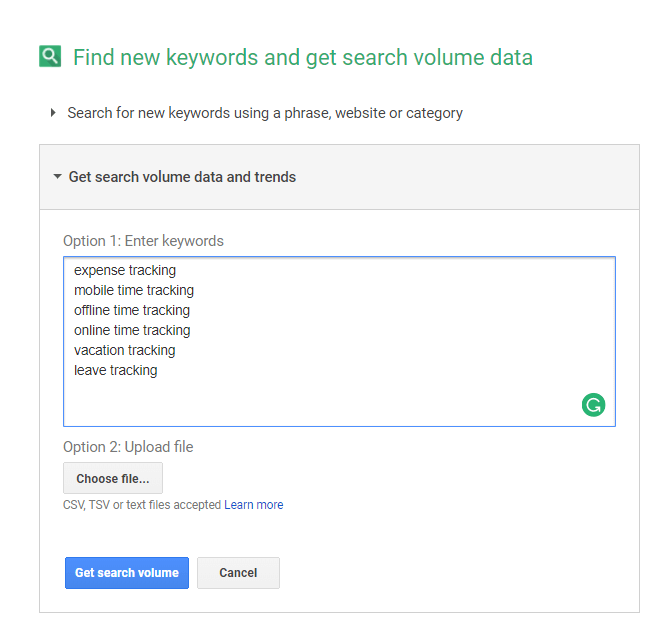
Then select keywords with the highest traffic volume:
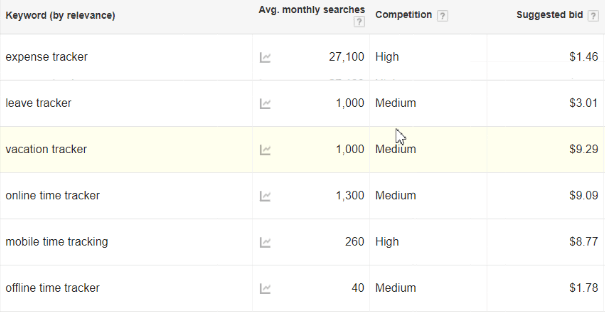 As always, pay attention to the number of queries, competition, and suggested bids.
As always, pay attention to the number of queries, competition, and suggested bids.
Also, you can get even more keywords.
Click “modify search”:
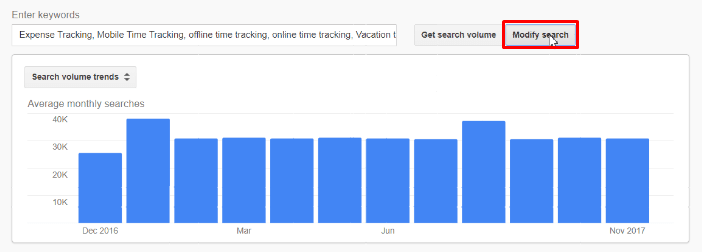
Then click “Get search volume data and trends”:
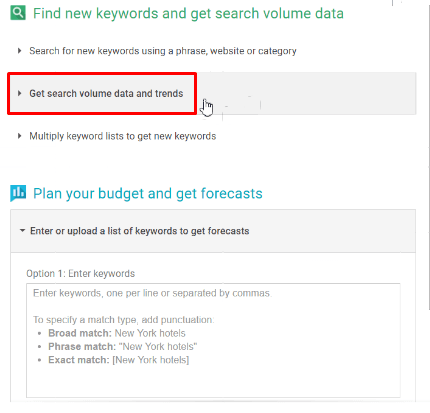
In the right column, write a few keywords with commercial intent with that Keyword Planner can “play” with:
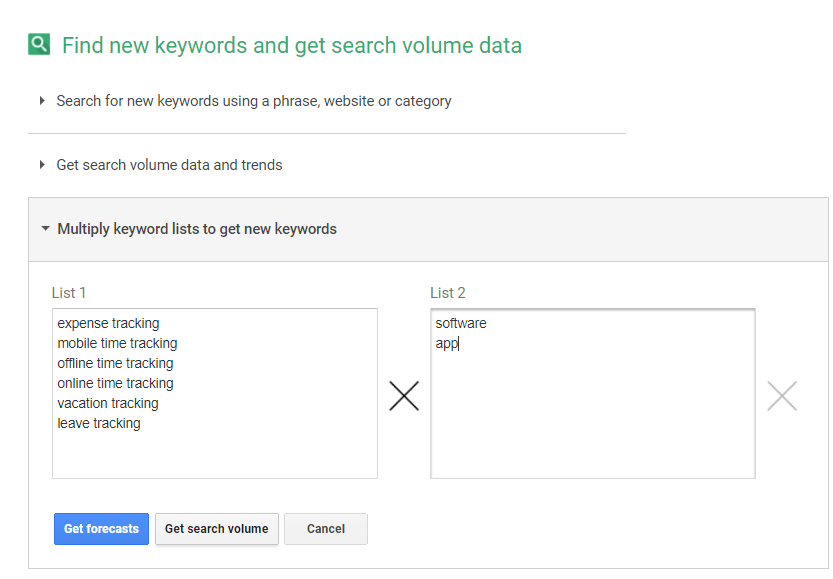 The service will suggest a lot of new keywords, based on those words that you entered in the right column.
The service will suggest a lot of new keywords, based on those words that you entered in the right column.
So, new keywords appear:
 You can create dozens of target keywords.
You can create dozens of target keywords.
4) Use the most popular keywords in your ad campaigns
Now take the relevant keywords and add them to your advertising.
Wrapup
In many spheres of SaaS business, competition and CPCs in Google AdWords are especially high. The cost of a single click can be estimated in tens of dollars.
This makes getting leads very expensive.
We suggest four working approaches to get cheaper leads.
Here they are in a quick list:
- Use your competitors’ brand names for keywords
- Use the “alternatives” keyword
- Use keywords based on the segments of your target audience
- Use keywords based on the features of your product
Now it’s your turn.
How do you deal with the competition and high CPCs at Google AdWords? Do you have your own approaches to finding popular and cheap keywords?
